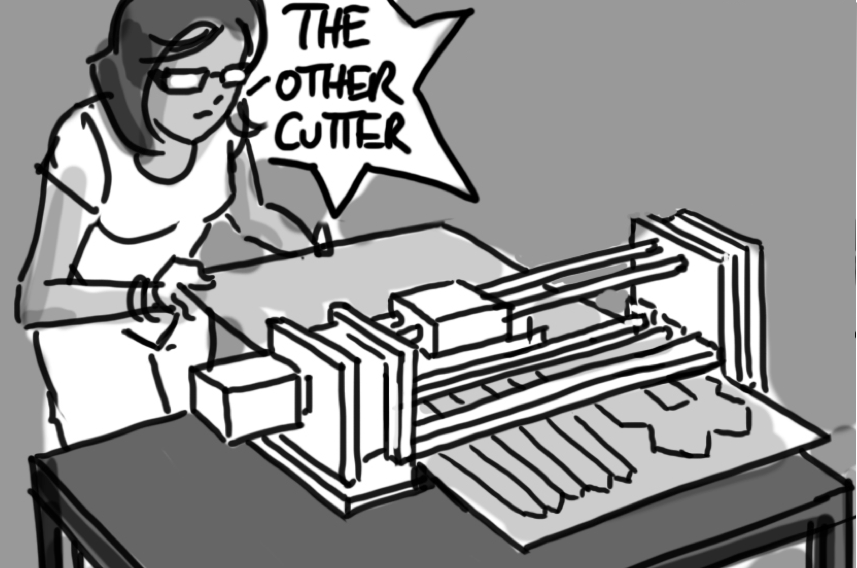The Othercutter - low cost CNC machine
One of the Otherlab objectives for the MENTOR Makerspace project is to design and manufacture a low-cost CNC (computer numerically controlled) machine. Some of the driving factors in the design of this machine are: ease of use, safety in a classroom setting, straightforward and inexpensive maintenance, and sustainability of operation. The OtherCutter is Otherlab’s first homegrown CNC machine for the MENTOR Makerspace project. Mike Estee and Jonathan Ward have designed and manufactured the OtherCutter to use a reciprocating x-acto knife blade for cutting cardboard or any other sheet material that you cut by hand with an x-acto knife.
To make a machine easy for students and teachers who are new to the world of CNC machines, the mechanical design includes a roll feed that automatically loads the cardboard, and aligns the blade at the beginning of each use. One of the barriers to using modern, industrial CNC machines is the software interface that is used to control them. With industrial CNC machines, it often takes significant time and training to be able to upload a file to the machine, align the machine, choose the sequence of cutting paths that the machine will follow, and monitor the machine to make sure that it is operating properly. We feel like if our goal is getting students and teachers to design and manufacture things, we have to diverge from the precedent and imagine an entirely novel user interface for the OtherCutter.
Forrest Green is our primary software engineer for the OtherCutter. He is working on CAM (computer aided manufacturing) software – that’s what you call the software that controls CNC machines – that will do a lot of the heavy lifting for you. We envision an interface where you simply upload or even drag a file of your cuts into the software, choose the size and thickness of your cardboard, and press GO. Then an animation of the OtherCutter on your computer screen shows you what the OtherCutter should be doing on your benchtop.
The safety and the straightforward maintenance of the OtherCutter design are intertwined. We opted for using a reciprocating blade for the OtherCutter because we could achieve most of the functionality that a CNC laser cutter has, but without the fire and fume hazards that come along with laser cutting. The OtherCutter does not need to be vented, the price of replacing the blade is only a few cents, and blade replacement can be completed in a matter of minutes. The entire machine is just over 100 parts that are largely made of food grade plastic and aluminum. The OtherCutter meant to be sturdy, and it’s put together in a way that allows you easy visual access to all of its components. The ability to see all of the pieces is given intentionally. We want everyone to be able to understand how the OtherCutter works, even to the point of being able to make one of their own.
The last, and maybe the most important quality of the OtherCutter is the sustainability of its use. It would be a failure of the MENTOR Makerspace program if, after the three years of the program, the cost of using the machine for prototyping and manufacturing was prohibitive within the existing school budgets. For this reason, the OtherCutter is designed to be great with cardboard. The cardboard you use with the OtherCutter isn’t special cardboard. As long as the cardboard is clean, reasonably flat, and free from staples, it can be cut to fit the machine and used. By choosing a material that is low-to-no-cost, we can make sure that schools can support the use of the OtherCutter even after the MENTOR Makerspace program has ended.





